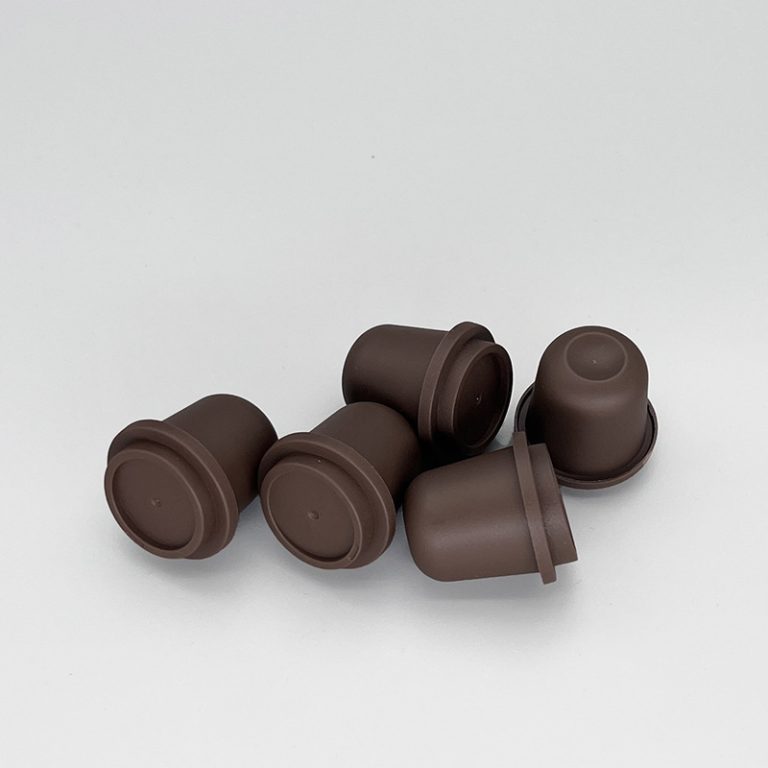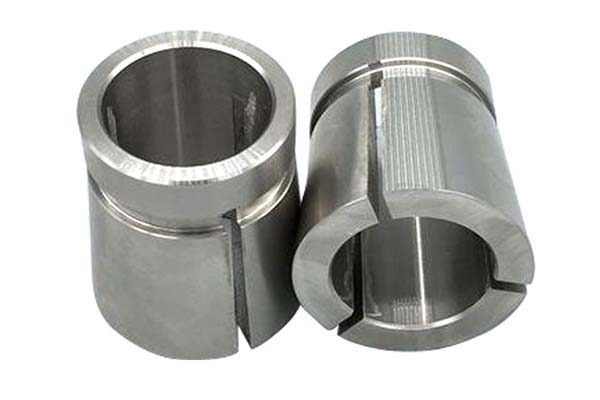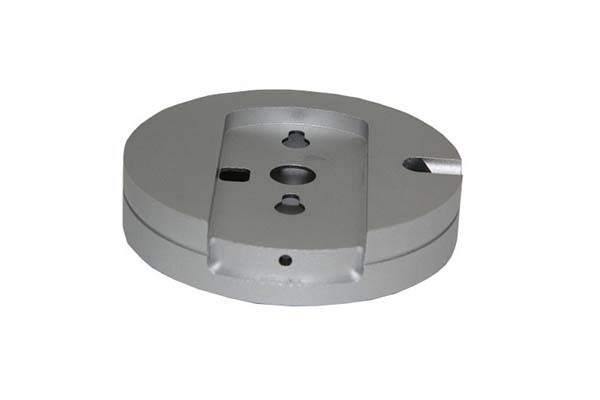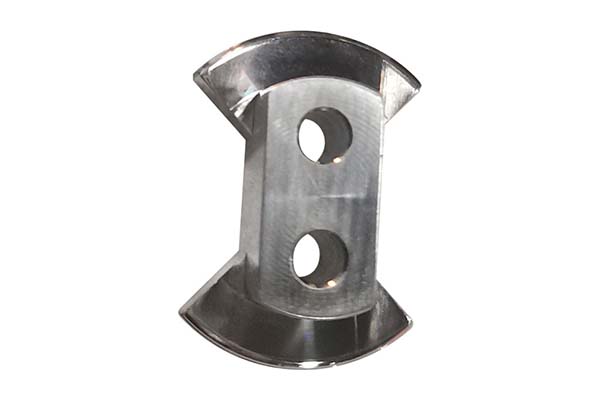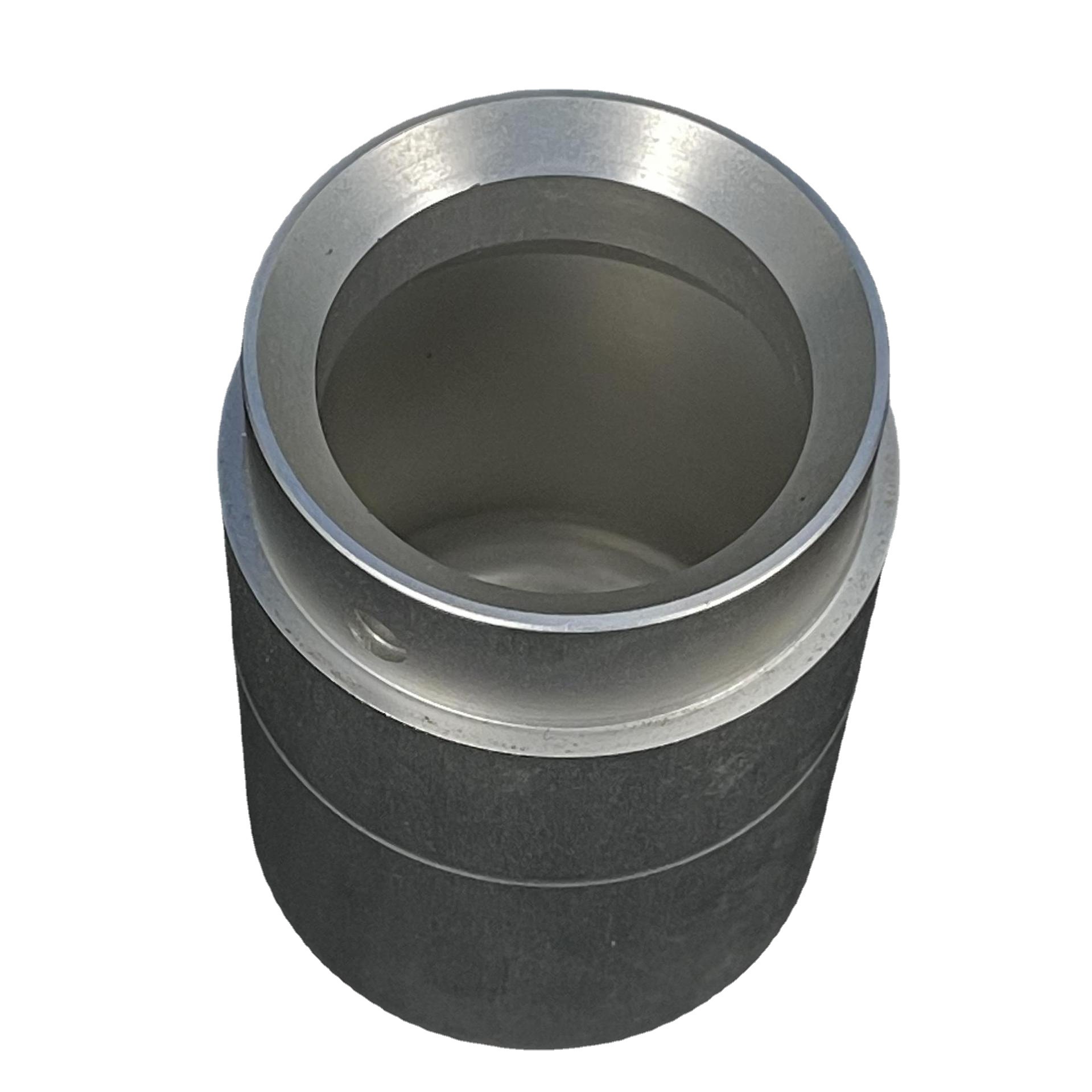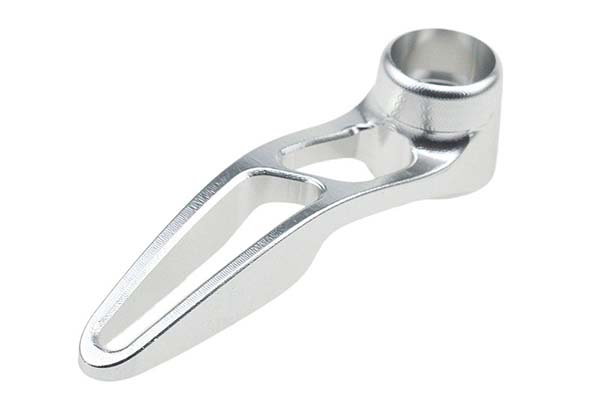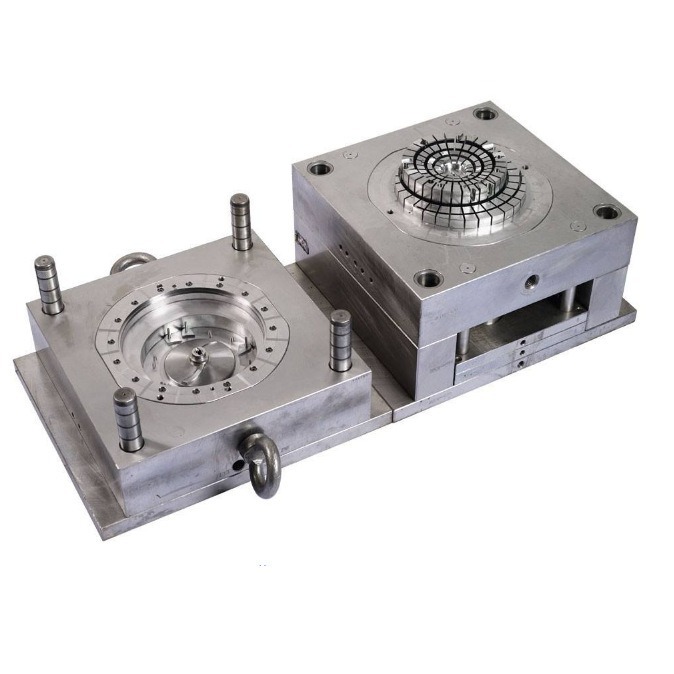Introduction
In the vast realm of manufacturing, machining precision stands as the cornerstone upon which the success of countless products and industries is built. It is the defining factor that separates the ordinary from the extraordinary, the functional from the exceptional. Consider, for instance, the manufacturing of a smartphone chip. This tiny component, often no larger than a fingernail, houses billions of transistors. The difference between a 7 - nanometer and a 5 - nanometer chip lies in the minuscule scale of precision in placing these transistors. A 5 - nanometer chip can pack even more transistors in the same space, leading to faster processing speeds and lower power consumption. This is crucial in a smartphone where every bit of performance and battery life matters.
In the automotive industry, engine components require extremely high machining precision. A piston with even the slightest deviation in size or shape can cause engine inefficiencies, reduced fuel economy, and potentially engine failure. For aerospace applications, precision is a matter of life and death. Aircraft turbine blades, for Yigu Technology example, must be manufactured with such precision that they can withstand the extreme conditions of high - speed flight, including intense heat and stress. Any deviation could lead to catastrophic consequences during flight.
As technology continues to evolve, the demand for higher machining precision is ever - increasing. Whether it's in the development of medical devices like implantable pacemakers, where precision ensures proper functioning within the human body, or in the creation of high - end optical lenses for telescopes and cameras, which require flawless surfaces to capture clear images, machining precision is the key to unlocking new possibilities.
Factors Influencing Machining Precision
Machine Tools
Machine tools are the heart of any machining operation, and their precision is fundamental to achieving high - quality results. One of the key aspects of machine tool precision is spindle Rotational accuracy. The spindle is the component that rotates the workpiece or the cutting tool. A high - quality spindle can maintain a very small radial and axial run - out. For Yigu Technology example, in a high - end precision lathe, the spindle radial run - out can be as low as 0.001mm, while in an ordinary lathe, it may be around 0.01mm. This small difference in run - out can have a significant impact on the roundness of a turned part.
Guide rail accuracy is another crucial factor. Straight and flat rail ensure that the cutting tool moves precisely along the intended path. In a milling machine, for instance, if the X - axis rail has an error of 0.02mm over a length of 1000mm, it will cause the milled surface to have a deviation in flatness. High - precision machine tools often use linear motion guides with extremely low friction and high accuracy. These guides can achieve positioning accuracies in the sub - micrometer range, while traditional slide - way guides in ordinary machine tools may have positioning accuracies in the range of 0.01 - 0.1mm.
Comparing the machining accuracy of a common CNC milling machine and a high - end precision milling machine, the common one might have a positioning accuracy of ±0.05mm, while the high - end model can reach ±0.001mm. This significant difference is due to the better quality of components, more advanced manufacturing techniques, and superior control systems in high - end machine tools.
Cutting Tools
Cutting tools play a vital role in machining precision. As a tool cuts through the workpiece, it experiences wear. tool wear can lead to changes in the size and surface quality of the machined part. When a turning tool's cutting edge wears, the diameter of the cylindrical part being turned will gradually increase. Research shows that for every 0.1mm increase in the flank wear of a carbide turning tool, the diameter of the machined part can increase by approximately 0.02 - 0.03mm.
tool wear also affects the surface roughness of the workpiece. A sharp tool produces a smooth surface, while a worn - out tool leads to a rougher surface. For Yigu Technology example, in a milling operation, a new carbide end - mill may produce a surface roughness of Ra0.8μm. As the tool wears, the surface roughness can increase to Ra3.2μm or even higher. This is because the worn - out cutting edges cause more vibrations and inconsistent cutting forces during the machining process.
Moreover, the geometry of the cutting tool is crucial. For example, in drilling, the angle and sharpness of the drill bit determine the accuracy of the hole's diameter and the straightness of the hole axis. A well - ground drill bit with the correct point angle can produce holes with a diameter accuracy within ±0.05mm, while a dull or mis - ground drill bit may result in holes with a diameter deviation of up to ±0.2mm.
Machining Processes
Different machining processes have distinct capabilities in terms of achieving machining precision. Here is a comparison of some common machining processes and their typical machining accuracy ranges:
| Machining Process | Precision Range (Dimensional Tolerance) | Surface Roughness (Ra) |
| Turning (General) | IT8 - IT7 (0.03 - 0.05mm for medium - sized parts) | 1.6 - 0.8μm |
| Turning (High - Precision) | IT6 - IT5 (0.005 - 0.015mm for medium - sized parts) | 0.4 - 0.1μm |
| Milling (General) | IT8 - IT7 (0.03 - 0.05mm for medium - sized parts) | 6.3 - 1.6μm |
| Milling (High - Precision) | IT7 - IT6 (0.015 - 0.03mm for medium - sized parts) | 3.2 - 0.8μm |
| Grinding (General) | IT8 - IT5 (0.005 - 0.02mm for medium - sized parts) | 1.25 - 0.16μm |
| Grinding (Ultra - Precision) | IT4 - IT3 (0.001 - 0.005mm for medium - sized parts) | 0.04 - 0.01μm |
turning is suitable for producing rotational parts with relatively high precision, especially when using high - precision lathes and advanced cutting tools. milling is versatile for machining flat surfaces, grooves, and complex shapes, but its precision may be slightly lower than grinding in some cases. grinding is often used for finishing operations to achieve very high precision and low surface roughness, making it ideal for parts that require tight tolerances and smooth surfaces.
Operator Skills
The skills and experience of the machine operator are often underestimated but are in fact crucial for achieving high machining precision. An operator with excellent programming skills can write highly optimized G - code programs. For Yigu Technology example, in a 5 - axis machining operation, a skilled operator can program the tool paths in such a way that the tool changes direction smoothly, minimizing the impact on the surface finish and dimensional accuracy. A novice operator, on the other hand, may create programs with sudden changes in speed and direction, leading to vibrations and inaccuracies.
During the machining process, an experienced operator can effectively monitor the operation and make timely adjustments. They can detect abnormal cutting forces, vibrations, or tool wear through sound, feel, or by observing the machine's parameters. For instance, an experienced operator can notice a slight increase in cutting force, which may indicate early tool wear. They can then adjust the cutting parameters or change the tool before it causes significant damage to the part's accuracy. In contrast, a less - experienced operator may not notice these signs until the problem has become more severe, resulting in parts that do not meet the required precision.
When setting up the machine, an experienced operator pays close attention to details such as workpiece alignment and tool calibration. They can ensure that the workpiece is perfectly centered and clamped firmly, which is essential for achieving accurate results. A novice operator may make mistakes in alignment, leading to errors in the position and shape of the machined part.
Environmental Conditions
Environmental conditions have a non - negligible impact on machining precision. Temperature is a major factor. In a machining workshop, a temperature change of just 1°C can cause the expansion or contraction of the machine tool and the workpiece. For a steel workpiece with a length of 1000mm, a 1°C temperature increase can cause it to expand by approximately 11.5μm. This expansion can lead to dimensional inaccuracies, especially in high - precision machining. In ultra - precision machining, temperature - controlled environments are often used to maintain a constant temperature within ±0.1°C.
Humidity can also affect machining precision, especially when dealing with certain materials. High humidity can cause corrosion on metal workpieces and machine components, which in turn can affect the surface quality and dimensional accuracy. For example, in the machining of aluminum alloys, high humidity can lead to the formation of oxide layers on the surface, which can interfere with the cutting process and cause surface roughness issues.
Vibration is another environmental factor that can disrupt machining precision. External vibrations from nearby machinery, traffic, or even the building's structure can be transmitted to the machine tool. These vibrations can cause the cutting tool to deviate from its intended path, resulting in surface roughness and dimensional errors. In precision machining facilities, vibration - isolation measures such as using anti - vibration pads, isolating the machine from the floor, and building vibration - free foundations are often employed.
Measuring Machining Precision
Common Measuring Instruments
Accurate measurement is the key to ensuring machining precision. There are several common measuring instruments used in the manufacturing industry, each with its own characteristics, precision levels, and applicable scenarios.
- (Caliper): There are mainly three types: (Vernier Caliper), (Dial Caliper), and (Digital Caliper). The common resolution of vernier calipers is 0.02mm, 0.05mm, or 0.1mm, with an accuracy of about ±0.03mm - ±0.05mm. For Yigu Technology example, in a small - scale mechanical parts processing workshop, when measuring the outer diameter of a shaft with a nominal diameter of 20mm, a 0.02mm - resolution vernier caliper can provide relatively accurate measurements within the allowable tolerance range of general - precision parts. Caliper is suitable for measuring the length, outer diameter, inner diameter, and depth of general - precision parts. It is widely used in general mechanical manufacturing, repair, and some low - to - medium - precision product manufacturing processes due to its simple operation and relatively wide measurement range.
- (Micrometer): Also known as (Spiral Micrometer), it can achieve a measurement accuracy of up to 0.01mm. In the production of precision mechanical components, such as the manufacturing of high - precision engine valves, the diameter of the valve stem needs to be precisely controlled. A micrometer can accurately measure the diameter of the valve stem to ensure that it meets the tight tolerance requirements. Micrometers are mainly used for measuring the outer diameter, thickness, and other dimensions of small - sized and high - precision parts. They are indispensable in precision machining workshops where high - precision measurement of small - sized parts is required.
- (Coordinate Measuring Machine, CMM): This advanced measuring equipment can achieve extremely high precision, with some high - end models capable of reaching a measurement accuracy of ±0.001mm or even higher. In the aerospace industry, when measuring the complex - shaped parts of aircraft engines, such as turbine blades, the CMM can accurately measure the three - dimensional shape and dimensions of the blades. It can measure various geometric features, including length, angle, flatness, and roundness, and is suitable for measuring complex - shaped parts, parts with high - precision requirements, and for quality control in large - scale and high - value - added product manufacturing processes.
Measuring Methods and Standards
The choice of measuring method is closely related to the nature of the product and production requirements, and compliance with relevant standards ensures the consistency and reliability of measurement results.
- (Measuring Methods):
- (Sampling Measurement): This method involves randomly selecting a part of the products from a batch for measurement. For Yigu Technology example, in the mass production of electronic components, if thousands of resistors are produced in a batch, only a certain number, such as 50 - 100 pieces, are randomly selected for measurement of resistance values. Sampling measurement is suitable for mass - production scenarios where the production batch is large, the inspection cost is high, or the inspection is destructive. It can save time and cost while still providing a certain degree of quality control by using statistical methods to infer the overall quality of the batch based on the sample data.
- (Full Inspection): As the name implies, every single product in a batch is inspected. In the production of high - end medical implants, such as artificial hip joints, each joint is fully inspected for dimensional accuracy, surface quality, and material integrity. Full inspection is often required for products with high - safety requirements, high - value products, or products with relatively small production batches, to ensure that each product meets the strictest quality standards.
- (Measuring Standards):
- (International Standards): In the field of machining precision, some widely recognized international standards exist. For example, the ISO (International Organization for Standardization) has issued a series of standards related to geometric product specifications (GPS), such as ISO 1101 which defines the geometric tolerances for features of size, form, orientation, and location. These standards ensure that products and manufacturing processes from different countries can be compared and evaluated on a unified basis, facilitating international trade and cooperation in the manufacturing industry.
- (Industry Standards): Different industries also have their own specific precision standards. In the automotive industry, the German automotive industry standard VDA (Verband der Automobilindustrie) has strict regulations on the machining precision of engine components, transmission parts, etc. For engine cylinders, the dimensional tolerance requirements specified by the VDA standard are much stricter than general mechanical parts standards to ensure the performance and reliability of automotive engines. These industry - specific standards are formulated based on the unique requirements and characteristics of each industry to meet the needs of product performance, safety, and market competition.
Case Studies
High - Precision Machining in the Aerospace Industry
In the aerospace industry, machining precision is of utmost importance. Take aircraft turbine blades as an example. These blades operate in extremely harsh conditions, with temperatures reaching up to 1,500°C and high - speed rotation that generates significant centrifugal forces. To withstand these conditions, turbine blades must be manufactured with extremely high precision.
The dimensional accuracy requirements for turbine blades are typically within the range of ±0.05 - ±0.1mm. For example, the tip clearance of a turbine blade, which is the gap between the blade tip and the casing, needs to be precisely controlled. A too - large tip clearance can lead to increased heat transfer and reduced engine efficiency, while a too - small tip clearance may cause the blade to rub against the casing, resulting in blade failure. In modern aircraft engines, the tip clearance is often maintained within 0.2 - 0.5mm, and the manufacturing precision required to achieve this is extremely high.
To achieve such high machining precision, aerospace manufacturers employ advanced machining techniques. 5 - axis machining centers are commonly used. These machines can simultaneously control the movement of five axes (X, Y, Z, A, and B or C), allowing for the machining of complex three - dimensional shapes with high precision. For instance, a 5 - axis machining center can accurately machine the complex airfoil shape of a turbine blade, ensuring that the surface roughness is within the range of Ra0.4 - Ra0.8μm. This smooth surface finish reduces aerodynamic drag and improves the efficiency of the engine.
In addition, advanced measurement and inspection technologies are used. Coordinate Measuring Machines (CMMs) are used to measure the dimensions and geometric accuracy of turbine blades. Some high - end CMMs can achieve a measurement accuracy of up to ±0.001mm, enabling manufacturers to detect even the slightest deviations from the design specifications. Non - destructive testing methods such as ultrasonic testing and X - ray inspection are also used to detect internal defects in the blades, ensuring their structural integrity.
Precision Machining in the Medical Device Industry
In the medical device industry, machining precision directly impacts the quality and safety of products. Consider implantable medical devices like hip implants. These devices are designed to replace damaged hip joints and must fit precisely within the patient's body.
The dimensional tolerance for hip implants is typically very tight. For example, the diameter of the femoral stem, which is inserted into the thigh bone, may have a tolerance of ±0.05 - ±0.1mm. This ensures a proper fit within the bone canal, promoting osseointegration (the bonding of the implant to the bone) and reducing the risk of implant loosening. If the diameter is too large, it may cause excessive stress on the bone, leading to bone damage or fracture. If it is too small, the implant may not be stable, increasing the likelihood of failure.
High - precision machining techniques are essential for manufacturing hip implants. CNC (Computer Numerical Control) machining is commonly used. A CNC milling machine can precisely machine the complex shape of the hip implant cup, which articulates with the femoral head. The surface roughness of the cup's bearing surface needs to be extremely low, usually within the range of Ra0.1 - Ra0.2μm, to reduce friction and wear during joint movement. This smooth surface also helps to reduce the generation of wear particles, which can cause inflammation and implant failure over time.
Another example is the manufacturing of surgical instruments. Precision - ground scalpel blades require a very sharp cutting edge with a high degree of dimensional accuracy. The thickness of a high - quality scalpel blade may be controlled within ±0.01 - ±0.02mm, and the edge sharpness is measured in nanometers. This precision ensures clean and precise incisions during surgical procedures, minimizing tissue damage and promoting faster healing.
In the production of medical devices, strict quality control measures are in place. Every implant and surgical instrument undergoes multiple inspection processes. Optical comparators are used to measure the shape and dimensions of small components with high precision. These devices can project an enlarged image of the component onto a screen, allowing for accurate comparison with the design blueprint. In addition, surface profilometers are used to measure the surface roughness of components, ensuring that they meet the strict quality standards required for medical applications.
Conclusion
Yigu Technology Machining precision is the lifeblood of modern manufacturing. It is the key factor that enables the production of high - quality products across various industries, from the smallest medical implants to the largest aerospace components. The factors influencing machining precision, including machine tools, cutting tools, machining processes, operator skills, and environmental conditions, all interact in a complex manner. Each factor must be carefully controlled and optimized to achieve the desired level of precision.
FAQ
Q1: How can I improve the machining precision of my CNC machine?
A1: There are several ways to improve the machining precision of a CNC machine. First, ensure regular maintenance of the machine tool, including checking and replacing worn - out components such as spindles and linear guides. Second, use high - quality cutting tools and monitor their wear. Third, optimize the machining process by choosing the right cutting parameters and tool paths. Fourth, train operators to improve their skills in programming and machine operation. Finally, control the environmental conditions in the machining workshop, such as temperature and humidity.
Q2: What is the difference between general - precision machining and high - precision machining?
A2: General - precision machining typically has a dimensional tolerance in the range of 0.01 - 0.1mm and a surface roughness of 1.6 - 6.3μm. It is suitable for many common mechanical parts manufacturing. High - precision machining, on the other hand, can achieve a dimensional tolerance as low as 0.001 - 0.01mm and a surface roughness of 0.1 - 0.4μm. It is used for parts with extremely high - precision requirements, such as those in the aerospace and medical device industries. High - precision machining often requires more advanced machine tools, cutting tools, and manufacturing techniques.
Q3: How does temperature affect machining precision?
A3: Temperature can have a significant impact on machining precision. A change in temperature can cause the expansion or contraction of the machine tool and the workpiece. For example, for a steel workpiece, a 1°C temperature increase can cause it to expand by approximately 11.5μm per meter of length. This expansion can lead to dimensional inaccuracies, especially in high - precision machining. In ultra - precision machining, temperature - controlled environments are often used to maintain a constant temperature within ±0.1°C to minimize the impact of temperature on machining precision.
